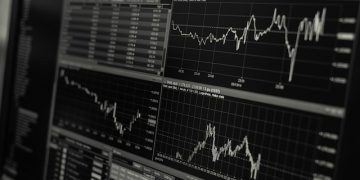Chinese stocks traded near a record as mainland financial markets opened for the first time following the Lunar New Year break.
The CSI 300 Index was little changed as of 10:51 a.m., after briefly surpassing its 2007 closing peak. The ChiNext gauge of small caps, which is more sensitive to liquidity conditions, fell by as much as 2.8% after the central bank withdrew short-term funding from the banking system. The yuan was steady.
The CSI 300 is up 12% this year, with a valuation metric at the highest in nearly six years. While traders remain bullish about the equity market’s long-term prospects, evidence of overcrowding in stocks like liquor makers is has made some investors more prudent. Thursday’s calm is a stark contrast to 2020, when Chinese markets plunged by the most value on record after an extended Lunar New Year break.
“It’s unsurprising to see some hesitation at this point with the institutional-loved stocks and those with high earnings visibility at these levels,” said Yang Zhiyong, a fund manager at Beijing Gemchart Asset Management Co. “The moves today match the trend globally in the past few days, which has been a surge in cyclicals like materials and energy while tech shares or those that are heavily held by institutional investors were weak.”

Traders had bid the CSI 300 Index up to 13-year highs in January, but momentum cooled as investors shifted a record level of money into Hong Kong stocks as domestic prices surged. The city’s $7.8 trillion equity market should also benefit from the reopening of trading links with the mainland, after an influx of mainland cash helped propel a world-beating rally for the Hang Seng Index.
China provided medium-term funds to lenders on Thursday, giving banks some relief after its cash drainage last month triggered the country’s worst liquidity squeeze since 2015.
The People’s Bank of China offered 200 billion yuan ($31 billion) of one-year liquidity with its medium-term lending facility, according to a statement. That helped offset the loans that mature this month. It kept the interest rate on the funds unchanged at 2.95%.
How China’s central bank balances support for an uneven economic recovery without fueling excessive speculation is a key driver of investor sentiment. Traders were rattled by January’s liquidity squeeze when the PBOC withdrew cash from the financial system for the first time in six months, but authorities have drip-fed funding since then to calm money markets and suppress interest rates.
While there are signs China’s economic recovery from the pandemic remains unbalanced, it is outpacing the rest of the world, having roared back to pre-pandemic growth rates in the fourth quarter.
“We’re all talking about the global pandemic recovery but the speed of recovery in China has been faster than any other country,” said Steven Leung, executive director at UOB Kay Hian (Hong Kong) Ltd. “While there are still sufficient funds in the market, more foreign investors will continue eyeing Chinese markets.”
— With assistance by April Ma




